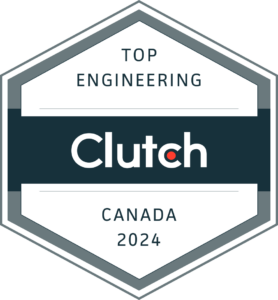The sixth post in our series on best practices in product development focuses on the process of transforming a concept into an actual product, and the challenge of manufacturing and delivering that product to the market.
Our industrial designer Mike who, along with his team, has developed a digital blood pressure device, must now deal with the same challenge that all new start-ups face: how to turn product development into strategic commercialization and how to transform their core skills to prepare for the first feasibility study.
Mike and the UX designer are still involved in the development process, but at this point the engineering team takes the lead. In fact implementing engineering discipline while maintaining flexibility is the best way to ensure a streamlined development process. Furthermore, it is important that the team uses the appropriate visibility tools in order to keep track of what needs to be done and who does what. Colleagues who want to verify that essential work is being done can achieve this through frequent product development peer reviews.
A Quality Management System (QMS) is essential
The addition of some key members to the team may now be necessary in order to put a Quality Management System (QMS) in place. This formalized system of documenting processes, procedures and responsibilities is an essential part of the preparation for the first human-use studies and the best way to avoid potential delays.
The QMS allows for the creation of the Alpha product – the first human-use product – by establishing a way of controlling, documenting and challenging both the quality and traceability of the design and manufacturing process. With a sound QMS established, product development that includes a disciplined documentation process and frequent testing can be initiated. The end goal of this phase is to achieve design freeze for the Alpha product.
Design freeze is the point at which the regulatory submission process to the FDA and Health Canada can begin, but regulatory approvals for human use testing and validation are impossible to obtain without a solid QMS system in place. Furthermore, Investigational Device Exemption (IDE) meetings are recommended at this time to ensure that the various regulatory bodies have all the information they need and that their concerns have been addressed during the Verification and Validation (V&V) testing.
The Alpha product must be as finished as possible in order for the team to file for certification with the required documentation because while time to market is the key factor for consumer products, certification is more important in the medical device industry and a disciplined documentation process is necessary for certification. In fact because people’s health and therefore their lives are at stake in the medical device industry, no medical device can be manufactured or marketed without FDA and Health Canada certification.

Prepare First, Then Manufacture
Once certification approval is achieved, manufacturing can begin. However, since this is when the first versions of the actual product appear, it is important to address key milestones of the development process prior to reaching this stage. For instance, testing and quality control should be considered early, and specifically before the manufacturing phase because most testing strategies generate additional engineering requirements and these requirements are faster to implement in the development cycle than at the end.
Furthermore, since certain leading-edge components can usually have anywhere from a four to six month lead time, supply chain strategies should be dealt with early and in parallel to engineering activities to mitigate potential product commercialization delays.
Mike and his team realize that all these critical factors must be taken into account both before and during manufacturing. But as much as they have diligently laid the groundwork, there are always unforeseen factors that will appear during the development process. How Mike’s team responds to these uncertainties could determine if their digital blood pressure machine is successful in the market or not.

